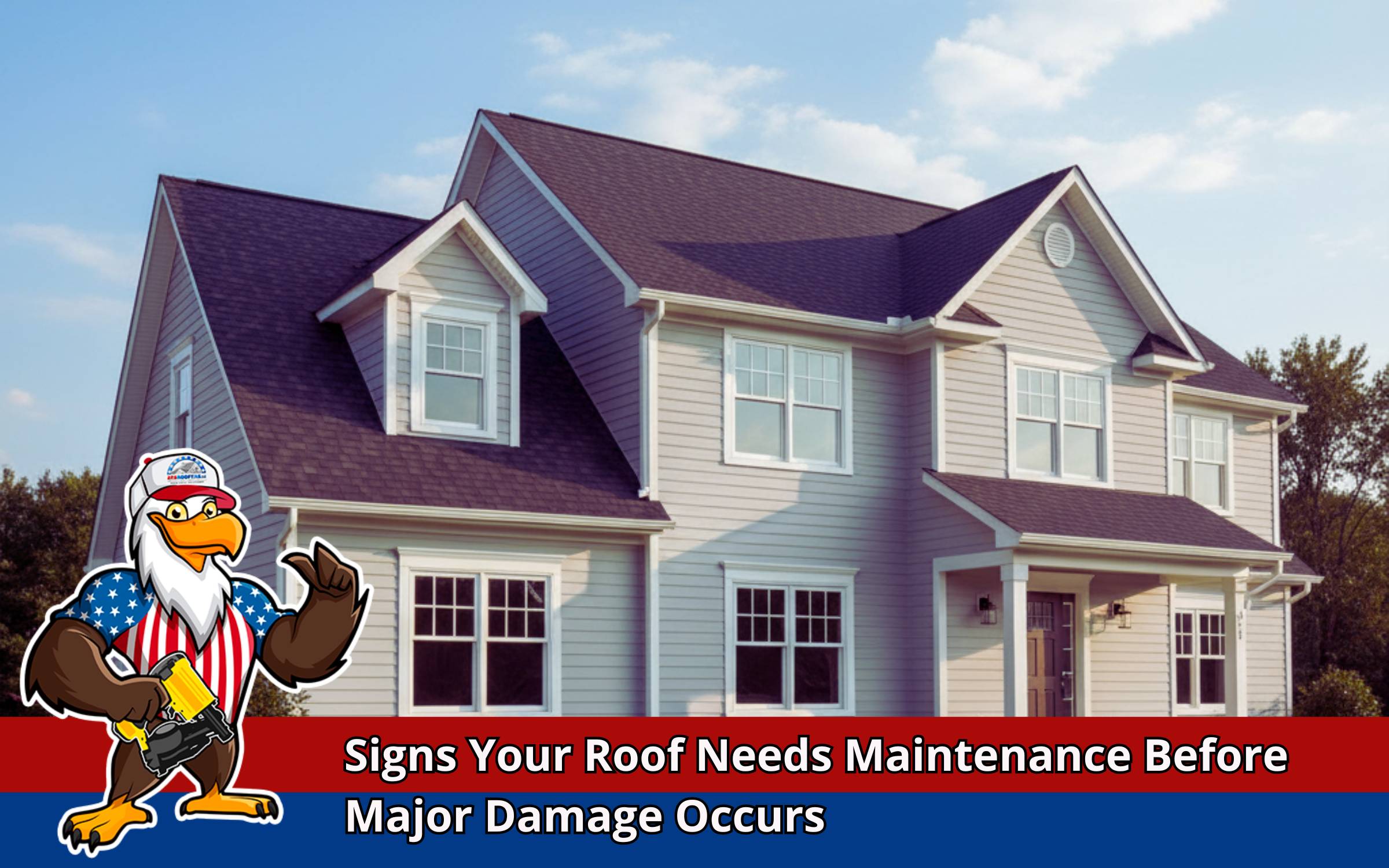
Your home is your sanctuary, but what happens when the roof starts to fail? Understanding how to know if your roof needs maintenance is essential. Small issues may escalate quickly into significant problems if ignored. Thankfully, clear signs help you act early.
Water stains on ceiling: indications of potential leakage
Water stains often appear as yellow or brown patches. These marks suggest moisture has entered through damaged shingles or flashing. If ignored, leaks cause structural decay and mold growth. Therefore, inspect your attic after rainfall for damp spots. When stains appear, address them immediately to avoid costly repairs.
- Check attic insulation after heavy rain.
- Look for sagging drywall beneath vents and chimneys.
- Trace stains back to damaged shingles or flashing.
If water marks spread, contact experts for an inspection through the contact page.
Missing or damaged shingles: red flags to watch
Shingles protect your roof from wind, rain, and UV rays. Missing, cracked, or curled shingles weaken this barrier. Loose granules in gutters confirm wear. Regular inspections help homeowners learn how to know if your roof needs maintenance effectively.
- Inspect twice yearly, especially in spring and fall.
- Check valleys, vents, and skylights for loose shingles.
- Replace damaged shingles promptly to prevent leaks.
To explore roof solutions, visit services.
Sagging roof deck: a serious warning
A sagging deck signals weakened rafters or trusses, often from moisture or excessive loads. Visible dips threaten structural safety. Shine a flashlight inside the attic to spot misaligned decking. If sagging is present, consult a roofer immediately.
- Remove moisture sources by fixing leaks.
- Improve ventilation to reduce structural stress.
- Seek professional reinforcement for damaged rafters.
Clogged or overflowing gutters: impact on roof health
Clogged gutters allow water to back up under shingles, causing wood rot and mold growth. Overflow may also harm fascia boards and foundations. Regular cleaning twice a year ensures proper drainage and extends roof life. Installing guards reduces debris, though maintenance remains necessary.
Light penetration in attic: insulation concerns
Daylight streaming into the attic signals gaps or loose flashing. Even small holes compromise insulation, increase bills, and invite moisture. Seal leaks with roofing cement and replace missing seals. This step forms part of how to know if your roof needs maintenance effectively.
Increased energy bills: efficiency warning signs
A sudden rise in heating or cooling costs often means roof problems. Damaged shingles or gaps strain HVAC systems. Thermal imaging or blower door tests confirm air leaks. Repairs not only reduce expenses but also prolong roof durability.
Mold and mildew growth: health and safety risks
Moisture from leaks creates breeding grounds for mold. This causes odors, stains, and health risks like allergies. Remove leaks first, improve ventilation, and treat surfaces with mold-killing solutions. Regular attic checks prevent fungal spread.
Age of roof: importance of routine checks
Asphalt shingles last around 20–30 years, metal up to 50. An aging roof loses granules and becomes brittle. Annual inspections help homeowners decide when to repair or replace before failure occurs.
Professional roof inspection: when to seek help
If unsure, a professional inspection identifies hidden damage. Certified roofers use thermal imaging and drone surveys for accurate reports. This expertise supports informed decisions about necessary maintenance or replacement.
Frequently Asked Questions
How often should I inspect my roof?
Inspect your roof twice annually, ideally in spring and fall. These checks reveal seasonal damage before it worsens.
Can I repair small roof problems myself?
Minor tasks like clearing gutters are possible. However, climbing on roofs without training is unsafe and may cause accidents.
What roof materials last longest?
Metal and slate last decades, though every material benefits when you know how to know if your roof needs maintenance.
What should I check after storms?
After storms, look for missing shingles, leaks, or debris in gutters. These indicate urgent roof concerns.
When should I call a professional?
Contact specialists through the contact page whenever you spot problems or feel uncertain.
Importance of timely roof maintenance
Regular monitoring helps prevent major damage. Understanding how to know if your roof needs maintenance ensures proactive action. By contacting experts and exploring services, you safeguard your property. Timely action today means long-term peace of mind tomorrow.
